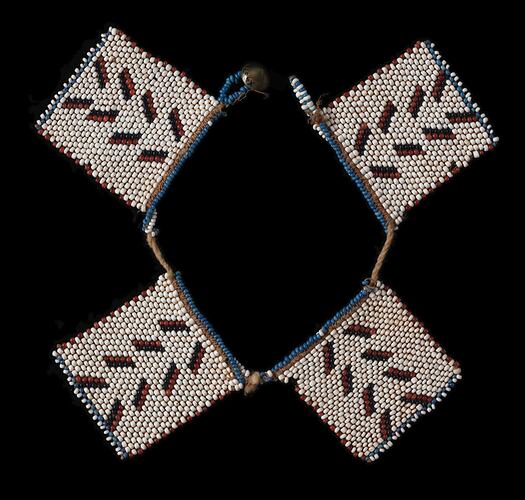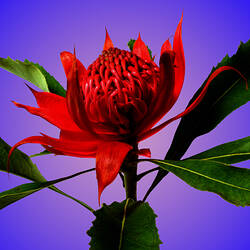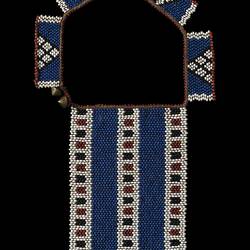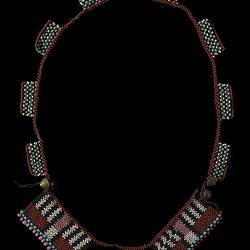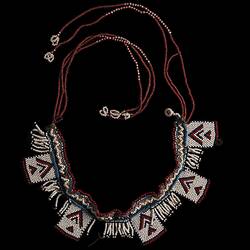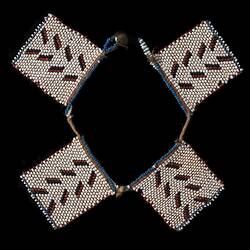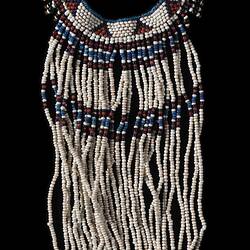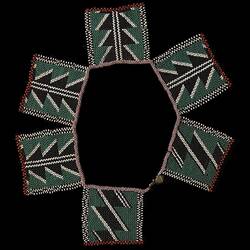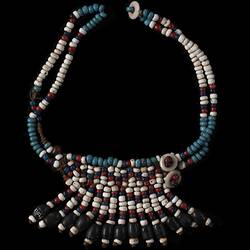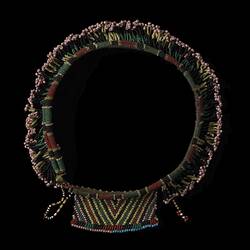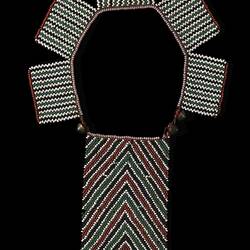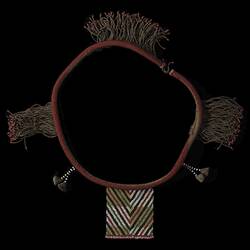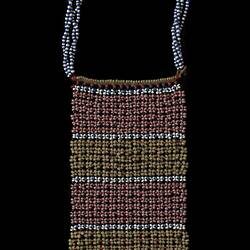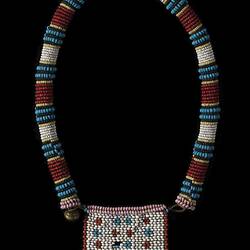While the Xhosa, and Southern Nguni more generally, never developed quite as elaborate a beadwork 'language' as the Zulu or Northern Nguni, beadwork was used as a means of communication between girls and potential suitors and the gift of beadwork from a girl to a boy was part of the courtship ritual with deeply emotional significance.
Two necklaces in the Museum's collection (item numbers X 46766 and X 46768) were from Tsolo in what used to be called the Transkei in the Eastern Cape Province of South Africa. The upward pointing triangles on X 46766 are the symbol for the female, if they were facing down it would represent the male. They contain colours favoured by the Xhosa, white (purity), red (passion), blue (youth), green (fertility) black (the oxhide skirt, the symbol of being ready for marriage). The elaborate necklace X 88877, with its sequence of female symbols around the neck could be read as, passionate, youthful and pure but ready to marry. The following necklaces (item numbers X 88877 and X 102673) were also probably of Southern Nguni origin but, like most Southern African beadwork in Western collections, they lacks any details as to where it was collected.
There are also examples of beadwork that expressed affection within the family. Mothers made beadwork for their infants and small children, who were often 'dressed' only in beaded finery, such as the child's waistband (item number X 102694). As a girl enters puberty, her dress becomes more elaborate, mothers and elder sisters made special adornments for them, such as the intricate udidla waist ornament (item number X 38063).
Dr David Craig Dorward (retired), formerly Director of the African Research Institute, LaTrobe University.
References:
R. Levinsohn, Art and Craft of Southern Africa: Treasures in Transition (Johannesburg: Delta Books, 1984) p. 84.
A.F. Gardiner, Narrative of a Journey to the Zoolu Country (London: William Croftts, 1836), p. 49.
G. F. Angas, The Kaffirs Illustrated (London: Hogarth, 1849; John William Colenso, D.D., Ten Weeks in Natal: A Journal of a First Tour of Visitation Among the Colonists and Zulu Kafirs of Natal (Cambridge: MacMillan & Co, 1855).
Emma Bedford , "Exploring Meanings and Identities: Beadwork from the Eastern Cape in the South African National Gallery", Ezakwantu: Beadwork from the Eastern Cape (South African National Gallery: 1994), pp. 15-16.
More Information
-
Keywords
-
Authors
-
Article types
